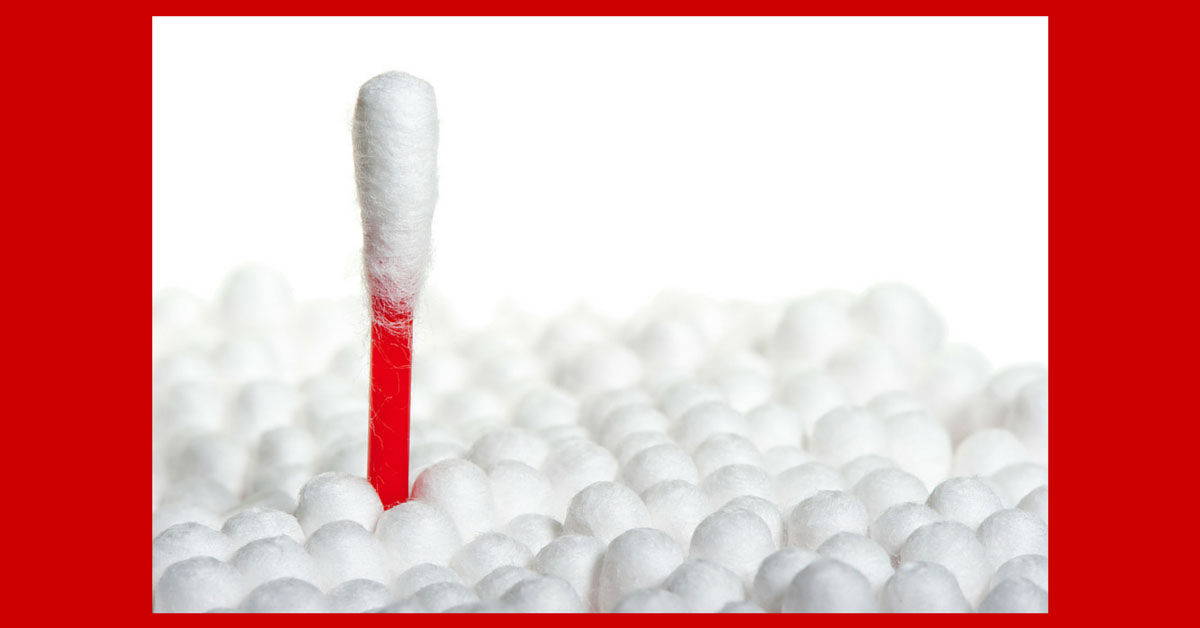
Everyone has had an issue with ear wax in their daily life, some more than others. It’s normal for many people to just grab a Q-Tip and start digging into their ear canal to clear the blockage. But are Q-Tips safe for your ear?
Ear wax (or cerumen) is formed inside the ear, in the outer portion of the ear canal. It lubricates the ear to help clear out dirt and keeps the skin inside the ear from drying out, stopping itchiness and even infections.
If you are producing excess ear wax, you could have symptoms ranging from earaches, tinnitus, a cough or discharge from the ear canal.
How Much is Too Much Ear Wax?
Under most circumstances, you should not be producing too much ear wax and would never need to clear out your ear canals. However, if you have experienced trauma to the inside of your ear, or had your ear canal narrow due to infection or stopped or reduced production of a more fluid cerumen, you may have blockages that need to be cleared out to improve quality of life and ear health.
By using a Q-Tip or other methods of removing ear wax, you are in fact usually stuffing ear wax further inside your ear, not removing it. According to medicinenet.net, “when a doctor sees that a person has wax pushed up against the eardrum, he or she knows that it is often because the individual has been probing his or her ear with such things as Q-Tips, bobby pins or twisted napkin corners. Such objects only serve as ramrods to push the wax deeper into the ear and can lead to problems.”
Q-Tip Injuries
Every year, approximately 12 million Americans see their doctors with “impacted or excessive cerumen,” which, in layman’s terms, means serious earwax problems. There are about 8 million yearly earwax removal procedures performed by medical professionals, according to the AAO-HNSF.
By using a Q-Tip, you risk damaging or even puncturing your ear drum, and you’re leaving your ears dry and open to infection. Instead, if you are having issues with ear wax building up, there are much safer methods of clearing out ear wax.
Dr. Douglas Backous, M.D., chair of the hearing committee of the American Academy of Otolaryngology-Head and Neck Surgery (AAO-HNSF) and director of hearing and skull base surgery at Swedish Neuroscience Institute in Seattle, recommends a safe irrigation method. A few drops in each ear of a mixture of one part white vinegar, one part rubbing alcohol and one part tap water at body temperature should do the trick.
If not, you should talk to a medical professional and get them cleared out.
Get the Help You Need
To reduce pain and prevent other long-term effects on the ear, medical care is recommended. With over ten years experience in treating ear infections, Dr. Nguyen can provide the professional and personal attention you need.
If you suspect you have an ear infection, please contact our office and schedule an appointment. Contact us or fill out our assessment form.
Share Tweet Email Ear candling already sounds dangerous even without an explanation of what it is, and it’s likely worse for you than you imagine. A certain amount of ear wax is actually important for preventing infections (though a build-up can make your ears itchy and impair your hearing), so removing it through ear candling […]
Share Tweet Email Are you interested in trying something natural to treat your child’s ear infection? It can be tempting – who wants to overexpose their children to powerful antibiotics and risk building up a resistance to this drug? However, “natural” shouldn’t be confused with “effective” or “safe.” Read on to learn about how some […]
